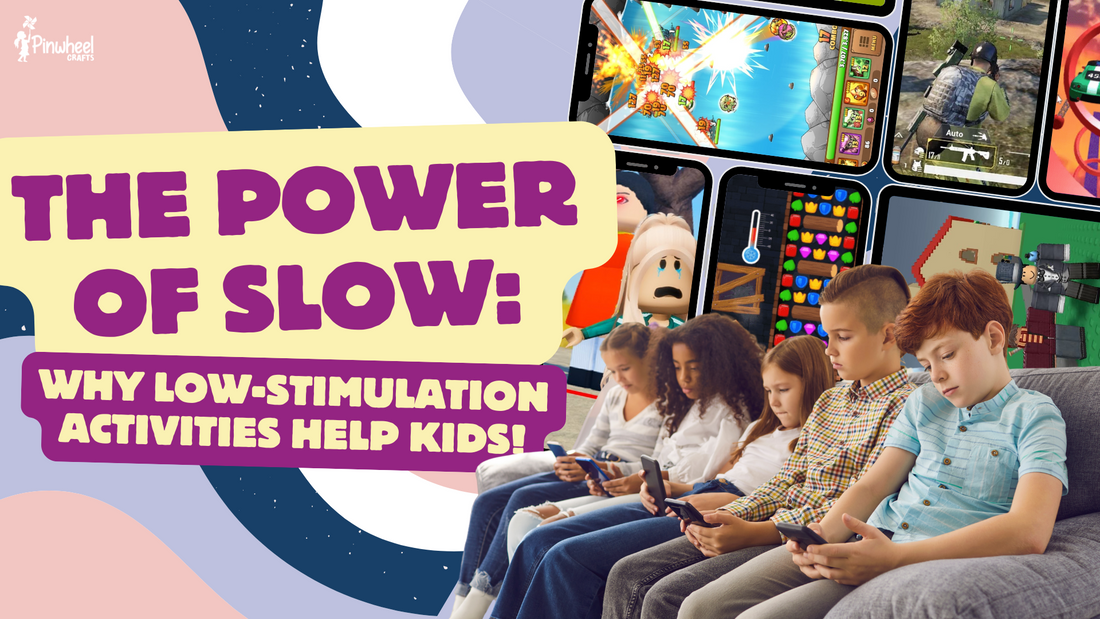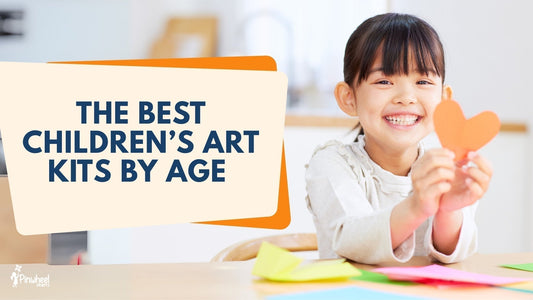
The Power of Slow: Why Low-Stimulation Activities Help Kids
Share
In a world filled with flashing screens, constant notifications, and fast-paced entertainment, children are often overstimulated without even realizing it. While exciting and engaging activities have their place, too much stimulation can lead to restlessness, trouble focusing, and even anxiety. As parents, we want to give our children enriching experiences without overwhelming them. That’s where low-stimulation activities come in - simple, calming experiences that foster creativity, focus, and emotional well-being.
The Problem with Overstimulation
From bright cartoons with rapid scene changes to loud toys with flashing lights, today’s children are exposed to more stimulation than ever before. While these can be fun in small doses, too much stimulation can have drawbacks, including:
- Difficulty concentrating or completing tasks
- Increased irritability or meltdowns
- Trouble winding down for sleep
- Shorter attention spans
- A constant need for external entertainment

Overstimulation can also make it harder for kids to enjoy slower, more thoughtful activities like reading, problem-solving, or imaginative play. That’s why balancing high-energy moments with peaceful, low-stimulation activities is key.
The Benefits of Low-Stimulation Activities
- Low-stimulation activities help children slow down, process their thoughts, and build essential skills like patience, creativity, and focus. Some benefits include:
- Improved emotional regulation – Kids who engage in quiet play and reflective activities learn how to manage their emotions more effectively.
- Stronger imagination – Less stimulation encourages deeper, more meaningful play, where kids come up with their own stories and ideas.
- Better focus and problem-solving – Slow, mindful activities give kids the space to develop concentration skills, which are useful in school and everyday life.
- Increased independence – Without constant external entertainment, children learn how to create their own fun and engage with the world at their own pace.
- More meaningful family connections – Slower-paced activities allow for better bonding moments between parents and kids, free from distractions and overstimulation.
Ideas for Low-Stimulation Activities
Here are some simple, calming activities to introduce into your child’s day:
1. Nature Walks with a Purpose
Instead of rushing through a walk, encourage kids to engage with their surroundings. Collect leaves, listen to birds, or look for interesting shapes in the clouds. This allows children to slow down and truly experience the world around them. You can even create a “quiet nature journal” where they can sketch or write about what they see.

2. Sensory Bins and Quiet Tactile Play
A simple bin filled with rice, dried beans, or water beads can keep kids engaged in a soothing, screen-free way. Add small toys or scooping tools for a quiet, hands-on experience. Try rotating different textures and materials to keep it fresh while maintaining a calming effect.
3. Storytime or Audiobooks
Reading together or listening to a gentle audiobook without flashy animations helps kids develop deeper comprehension skills and enjoy stories in a more relaxed way. Encourage them to close their eyes and visualize the story, strengthening their imagination and focus.
4. Art Without an End Goal
Give kids blank paper and a few crayons or colored pencils. Let them draw freely without instructions or pressure to create something specific. This encourages true self-expression. You can also introduce watercolor painting, which has a naturally soothing and meditative effect.

5. Gentle Movement
Soft instrumental music or nature sounds can provide a calming atmosphere. Pair this with slow stretches or simple movement games to help kids reset and relax. Even swaying with scarves to gentle music can be a wonderful way to move and unwind.
6. Simple Baking Together
Baking can be a beautiful way to introduce kids to mindfulness and patience. Let them take their time mixing, pouring, and watching ingredients come together. The slow, hands-on nature of baking provides sensory engagement without overstimulation - and the end result is a tasty reward!
Embracing the Joy of a Slower Pace
In a world that often feels too fast, giving children moments of quiet and creativity can be a gift. Low-stimulation activities aren’t about removing fun; they’re about creating space for deeper joy, focus, and connection. By incorporating these ideas into daily life, parents can help their children find balance, build emotional resilience, and develop a lifelong appreciation for simple, meaningful experiences.
Slowing down doesn’t mean missing out - it means making room for the moments that matter most. When kids learn to appreciate quiet moments, they become more adaptable, mindful, and engaged with the world around them. So take a breath, embrace the pause, and watch as your child flourishes in the beauty of a slower, more thoughtful rhythm.









